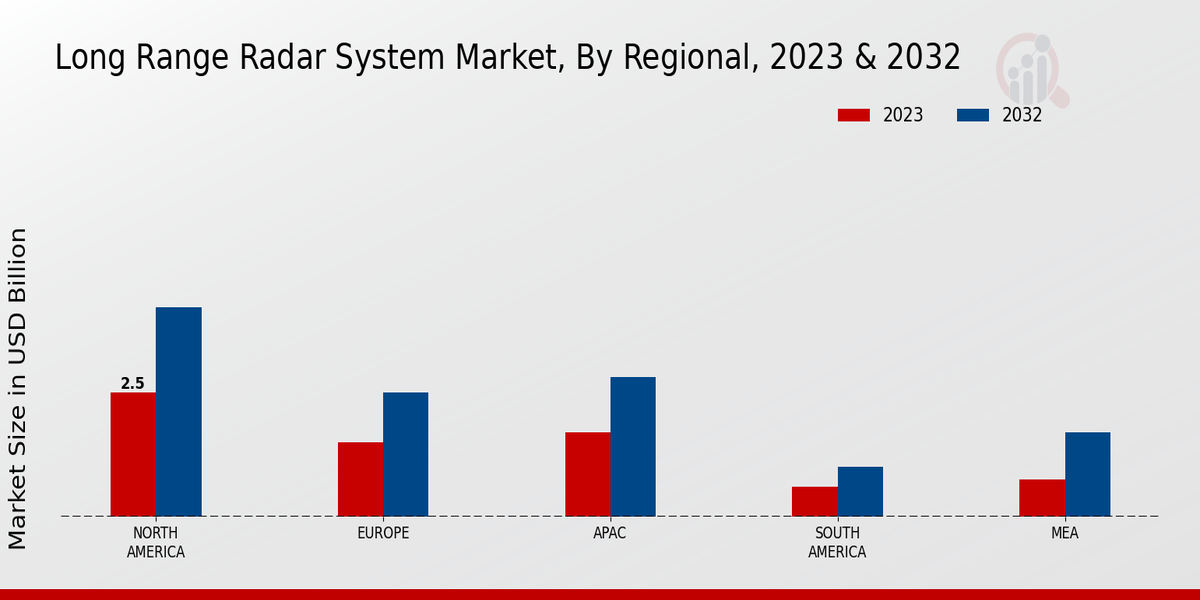Rising Defense Budgets
In recent years, many nations have significantly increased their defense budgets, which has a direct impact on the Long-range Radar System Market. This trend is largely driven by geopolitical tensions and the need for enhanced national security. Countries are investing in advanced radar technologies to bolster their defense capabilities, particularly in air and missile defense systems. For instance, the United States and several European nations have allocated substantial funds for upgrading their radar systems, which is expected to contribute to a market growth of around 7% annually. This focus on defense spending is likely to sustain demand for long-range radar systems in the foreseeable future.
Integration with Unmanned Systems
The integration of long-range radar systems with unmanned aerial vehicles (UAVs) and other unmanned systems is emerging as a key driver in the Long-range Radar System Market. This synergy enhances the operational capabilities of both radar and unmanned systems, allowing for more effective surveillance and reconnaissance missions. The ability to deploy UAVs equipped with long-range radar systems enables real-time data collection and analysis, which is crucial for military and civilian applications alike. As the use of unmanned systems continues to rise, the market for long-range radar systems is expected to see a growth rate of approximately 5.5% annually, reflecting the increasing reliance on these technologies for various operational needs.
Emerging Applications in Civil Aviation
The Long-range Radar System Market is witnessing an expansion into civil aviation applications, which is diversifying its traditional defense-oriented focus. The increasing air traffic and the need for efficient airspace management are driving the adoption of long-range radar systems in commercial aviation. These systems are essential for air traffic control, providing accurate tracking of aircraft over vast distances. The International Civil Aviation Organization has emphasized the importance of advanced radar systems in enhancing safety and efficiency in air travel. As a result, the market for long-range radar systems in civil aviation is expected to grow by approximately 5% annually, reflecting the rising demand for reliable and precise tracking solutions.
Increased Demand for Maritime Surveillance
The Long-range Radar System Market is also benefiting from the heightened demand for maritime surveillance solutions. With the rise in illegal fishing, smuggling, and piracy, nations are investing in advanced radar systems to monitor their territorial waters effectively. These systems provide critical data for maritime security operations, enabling authorities to respond swiftly to potential threats. The market for maritime radar systems is projected to grow at a rate of 6% per year, driven by the need for enhanced situational awareness and the protection of maritime assets. This trend indicates a robust future for long-range radar systems in the maritime sector.
Technological Advancements in Radar Systems
The Long-range Radar System Market is experiencing a surge in technological advancements, particularly in signal processing and data fusion techniques. These innovations enhance the detection capabilities of radar systems, allowing for improved tracking of aerial and maritime targets. The integration of artificial intelligence and machine learning algorithms is also becoming prevalent, enabling systems to analyze vast amounts of data in real-time. As a result, the market is projected to grow at a compound annual growth rate of approximately 6.5% over the next five years. This growth is driven by the increasing demand for sophisticated surveillance systems across various sectors, including defense, aviation, and maritime operations.



















Leave a Comment